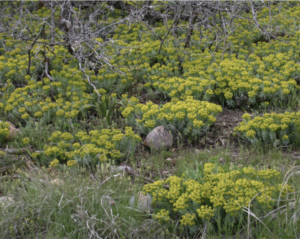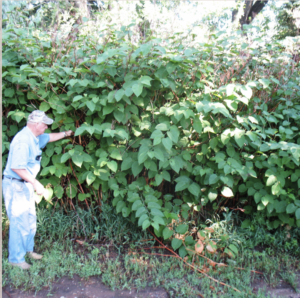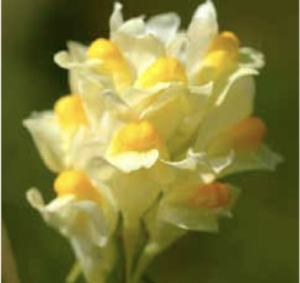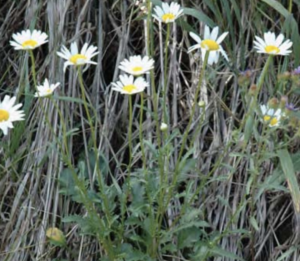
Many of us enjoy both “formal” and “informal” garden areas. Formal gardens are where the plants are familiar and desirable, while the informal areas may have lots of natives for attracting pollinators, birds and other wildlife, be out of sight or in an odd part of your property, or require more time or energy that you have available. Unfortunately, weeds find both environments to their liking.
After wandering through countless gardens of all varieties, I’ve come up with an informal classification of residential weeds. They can be grouped into four categories that may help you identify and manage a number of noxious weeds: inherited plants, ones you fell in love with, those that hide and surprise you, and some that are never desirable.
Inherited weeds
When moving to a new property or creating a new garden space, taking a roll call of what is already there is always a good idea. In general, you may find volunteers from previous gardens such as myrtle spurge or hedge-like visual barriers such as the knotweed group. All are List A noxious weeds in Colorado, so should be removed as required by the state’s noxious weed act. In New Mexico, Japanese knotweed is not included on the New Mexico Noxious Weed List* while myrtle spurge is identified as a Watch List Species.
Weeds you fell in love with
Though many of us love the pretty flowers found in seed packets and advertised as native, these packets often are available online from states with different weed statutes. Consequently, this source contributes many weed species to our gardens, including yellow toadflax and oxeye daisy. Both are List B noxious weeds in Colorado and Class A in New Mexico.
Hidden weeds that surprise you
Of the weeds that can be found in the hidden corners of your landscape, thistle species are often present. Identifying your thistles is important as our region has many native species. Canada and musk thistle love these spaces and are persistent so more challenging to control if not found early. Both are on List B in Colorado, while in New Mexico Canada thistle is categorized as Class A and Musk thistle as Class C.
Weeds that are never desirable
Poisonous weeds such as poison hemlock and myrtle spurge are never desirable. Other undesirables include extremely invasive ones like cheatgrass (or downy brome) and persistent ones like field bindweed. Cheatgrass reinfests properties every time you drop seeds when brushing the family pet or picking seeds off your socks. It also shows up in mixed-flower seed packets. It is a List C species in Colorado and Class C in New Mexico.

According to the New Mexico Department of Agriculture, the non-native plant species that gardeners in their state have the biggest problem with is field bindweed, but it was removed from the New Mexico Noxious Weed List due to the plant’s extensive statewide distribution. Of the species listed by New Mexico, cheatgrass and Siberian elm are the biggest problems for their gardeners.
For Colorado, see the full list of noxious weeds.
For New Mexico, see the most current complete noxious weed list and Troublesome Weeds of NM.
*All list identifications for New Mexico were current as of the July 2020 Noxious Weed List.
About the contributor: Steve Ryder is the State Weed Coordinator for the Colorado Department of Agriculture, managing the state’s Noxious Weed Program. His duties consist of administering the Colorado Noxious Weed Act by facilitating cooperation between federal and state land managers, local governments and private landowners on noxious weed management issues. The program administers grant programs that support local noxious weed management efforts.
Editor’s note: Special thanks to New Mexico Department of Agriculture (NMDA) staff for assistance with this article. NMDA promotes the viability and advancement of New Mexico agriculture and affiliated industries, as well as a fair marketplace, food protection, marketing and economic development, and supports the beneficial use and conservation of natural resources. The Noxious Weeds Management Act directs NMDA to develop a noxious weed list for the state, identify methods of control, and educate the public about noxious weeds. NMDA coordinates weed management among local, state and federal land managers and private landowners.
















